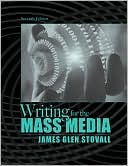Category Books
- Fiction Books & Literature
- Graphic Novels
- Horror
- Mystery & Crime
- Poetry
- Romance Books
- Science Fiction & Fantasy
- Thrillers
- Westerns
- Ages 0-2
- Ages 3-5
- Ages 6-8
- Ages 9-12
- Teens
- Children's Books
- African Americans
- Antiques & Collectibles
- Art, Architecture & Photography
- Bibles & Bible Studies
- Biography
- Business Books
- Christianity
- Computer Books & Technology Books
- Cookbooks, Food & Wine
- Crafts & Hobbies Books
- Education & Teaching
- Engineering
- Entertainment
- Foreign Languages
- Game Books
- Gay & Lesbian
- Health Books, Diet & Fitness Books
- History
- Home & Garden
- Humor Books
- Judaism & Judaica
- Law
- Medical Books
- New Age & Spirituality
- Nonfiction
- Parenting & Family
- Pets
- Philosophy
- Political Books & Current Events Books
- Psychology & Psychotherapy
- Reference
- Religion Books
- Science & Nature
- Self Improvement
- Sex & Relationships
- Social Sciences
- Sports & Adventure
- Study Guides & Test Prep
- Travel
- True Crime
- Weddings
- Women's Studies
Writing for the Mass Media » (7th Edition)

Authors: James G. Stovall
ISBN-13: 9780205627844, ISBN-10: 0205627846
Format: Paperback
Publisher: Allyn & Bacon, Inc.
Date Published: December 2008
Edition: 7th Edition
Author Biography: James G. Stovall
Book Synopsis
This successful book offers a simple organization, clear writing, abundant exercises, and precise examples that give readers the information about media writing and the opportunity to develop their skills as professional writers. Using a workbook-style format, it introduces and explains the major forms of media writing–inverted pyramid for print and Web, dramatic unity for broadcast, copy platforms for advertising, and the various writing structures required for public relations–and covers all major areas of media, including the Internet. Its basic and practical approach make it an excellent text for an introductory writing course.
Table of Contents
Table of Contents
Preface xi
Chapter 1: Sit Down and Write
- What is Good Writing?
- Getting Ready to Write
- Basic Techniques
- Writing for the Mass Media
- Professionalism
- The Changing Media Environment
- And Finally . . .
Chapter 3: Basic Tools of Writing
- Grammar
- Sentences
- Parts of Speech
- Common Grammar Problems
- Punctuation
- Spelling
- Computer Aids
- Words, Words, Words
- Writing With Clarity
Chapter 4: Style and the Stylebook
- Accuracy
- Clarity
- Brevity
- Journalistic Conventions
- Journalistic Style
- Stylebooks
- The Associated Press Stylebook
- Language Sensitivity
- Conclusion
Chapter 5: Writing in the Media Environment
- The News Culture
- Elements of News
- The Importance of Accuracy
- Deadlines
- Ethical Behavior
- The Reporting Method
- Sources of Information
- Personal sources
- Interviewing
- Observation
- Stores Sources of Information
- Writing by Example
Chapter 6: Basic News Writing I
- The Inverted Pyramid
- The Lead Paragraph
- Developing the Story
- Using Quotations
- Characteristics of News Stories
- Transitions
- Attribution
- Short Sentences, Short Paragraphs
- Third Person
- An Attitude for Accuracy
Chapter 7: Basic News Writing II
- Other Story Structures
- Types of News Stories
- Editing and Rewriting
- Writing Feature Stories
- Characteristics of Feature Writing
- Parts of a Feature Story
- The Challenge of Writing
Chapter 8: Writing for the Web I
- Characteristics of the Web
- Writing Characteristics and Techniques
- Forms of Writing
- Microcontent
- Weblogs
- A Full Arsenal
Chapter 9: Writing for the Web II
- Journalism Expanded and Accelerated
- Demands of the Audience
- Characteristics of Web Writing
- Backpack Journalism
- Lateral Reporting
- Web Packages
- Wanted for the Web: Writers and Editors
Chapter 10: Writing for Broadcast by Mark Harmon
- Broadcast Style
- Broadcast Copy Preparation
- Television News Story Formats
- Television News Story Scripts
- Putting Together a Newscast
- Conclusion
Chapter 11: Writing Advertising Copy
- A Love-Hate Relationship
- The Field of Advertising
- Beginning the Process: Needs and Appeals
- The Audience
- The Product
- The Advertising Situation
- Copy Platforms
- Writing the Ad
- Elements of a Print Ad
- Writing Advertising for Broadcast
- Web Advertising
- Other Media
- Conclusion
Chapter 12: Writing for Public Relations
- The Public Relations Process
- An Organization’s “Publics”
- The Work of the PR Practitioner
- Characteristics of the PR Practitioner
- Writing News Releases
- Video News Releases
- Letters
- Company Publications
- Oral Presentations
- Conclusion
Chapter 13: The Writer and the Law by Matthew Bunker
- The First Amendment
- Defamation
- The Plaintiff’s Case
- Affirmative Defenses
- Privacy
- Copyright and Trademark
- Advertising
- Broadcast Regulation
- Conclusion
Appendix A Copy-Editing Symbols
Appendix B Grammar and Diagnostic Exams
Appendix C Problem Words and Phrases
Appendix D Advertising Copy Sheets
Glossary
Index
Subjects
 Media
Media  Journalism
JournalismEntertainment
 Media
Media  Media - General & Miscellaneous
Media - General & MiscellaneousEntertainment
 Media
Media  Media - Theory & Philosophy
Media - Theory & PhilosophyNonfiction
 Social Sciences
Social Sciences  Media & Communications
Media & CommunicationsReference
 Writing
Writing  News & Magazine Writing
News & Magazine WritingReference
 Writing
Writing  Nonfiction Writing - General & Miscellaneous
Nonfiction Writing - General & MiscellaneousScience & Nature
 Social Sciences
Social Sciences  Media & Communications
Media & CommunicationsSocial Sciences
 Media & Communications
Media & Communications  Journalism
JournalismSocial Sciences
 Media & Communications
Media & Communications  Media - General & Miscellaneous
Media - General & MiscellaneousSocial Sciences
 Media & Communications
Media & Communications  Media - Theory & Philosophy
Media - Theory & PhilosophyNonfiction
 Entertainment
Entertainment  Media
MediaNonfiction
 Reference
Reference  Writing
Writing
